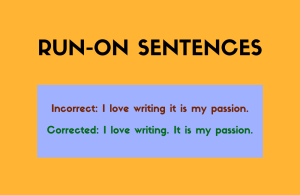This article covers the following areas –
- What is a Semicolon?
- Why Use a Semicolon?
- Where to Use a Semicolon?
- Advanced Uses of Semicolons
- Final Thoughts
Regarding punctuation, the semicolon might seem like one of the more elusive characters on your keyboard. Yet, understanding how to use a semicolon can greatly enhance the clarity and sophistication of your writing. This guide aims to demystify this often-overlooked punctuation mark, providing the tools to use it confidently in your writing.
A semicolon (;) links closely related independent clauses or separates items in a complex list. For example, “She writes; her words inspire.” It’s used between clauses that could stand alone but share a thematic connection or in lists with internal commas for clarity.
For a deeper understanding of semicolons, including varied examples and common pitfalls to avoid, continue reading to master this elegant punctuation tool.
What is a Semicolon?
A semicolon is a punctuation mark (;) used to connect closely related ideas. It stands somewhere between a period and a comma: stronger than a comma but not quite as divisive as a period. Its main role is to help organize complex ideas and clarify their relationships.
Example 1:
- Independent Clauses:
- “The storm is coming.”
- “Everyone should find shelter.”
- Combined with a Semicolon:
- “The storm is coming; everyone should find shelter.”
In this example, the semicolon connects two related ideas without the abrupt stop of a period. It suggests a close relationship between the impending storm and the need for shelter.
Example 2:
- Independent Clauses:
- “He studied hard for the exam.”
- “He was confident and relaxed.”
- Combined with a Semicolon and Conjunction Adverb:
- “He studied hard for the exam; therefore, he was confident and relaxed.”
Here, the semicolon is used before ‘therefore,’ showing a cause-and-effect relationship between studying hard and feeling confident.
Example 3:
- List without Semicolon:
- “On our trip, we visited Seoul, South Korea, Tokyo, Japan, and Beijing, China.”
- List with Semicolon for Clarity:
- “On our trip, we visited Seoul, South Korea; Tokyo, Japan; and Beijing, China.”
In this example, the semicolon is used to clearly separate items in a complex list, each containing internal commas.
Why Use a Semicolon?
The semicolon, often seen as a mere speck on a page, is a powerful tool in the craft of writing. It’s more than a simple punctuation mark; it’s a bridge that connects, clarifies, and enriches our sentences. Understanding why to use a semicolon is as important as knowing how to use it. In this section, we’ll explore the key reasons for using semicolons, delving into their role in providing clarity, influencing the pace and rhythm of sentences, and highlighting relationships between ideas.
1. For Clarity in Complex Sentences
Semicolons can be invaluable in sentences that contain multiple ideas or clauses, especially where commas might lead to confusion. They help in separating different components of a sentence clearly and distinctly.
For example,
Without Semicolon:
“The conference, which included representatives from London, England, Paris, France, and Rome, Italy, was a success.”
With Semicolon:
“The conference, which included representatives from London, England; Paris, France; and Rome, Italy; was a success.”
In this example, the semicolon makes it easier to discern the different locations, enhancing the sentence’s clarity.
2. To Maintain Pace and Rhythm in Writing
A semicolon can subtly change the rhythm of a sentence, creating a pause that is more pronounced than a comma but less final than a period. This can be particularly effective in controlling the flow of your prose.
For example,
“She didn’t want to go; she knew it would be a mistake.”
Here, the semicolon creates a thoughtful pause, reflecting the protagonist’s hesitation.
3. To Emphasize Relationships Between Thoughts
One of the semicolon’s most significant roles is underlining the relationship between closely related but independent clauses. It highlights how one thought is derived from or connected to another.
For example,
“He was late to the meeting; his car had broken down.”
This use of a semicolon indicates a direct cause-and-effect relationship between the two clauses.
Where to Use a Semicolon?
Understanding where to place a semicolon in your writing is crucial for conveying your message with clarity and precision.
The semicolon is not just a stylistic ornament; it’s a functional tool that enhances the structure and clarity of sentences. Its correct placement can transform a simple text into a more sophisticated and well-organized piece of writing.
Let’s explore the key situations where a semicolon can effectively improve your writing.
1. Between Independent Clauses
One of the most common uses of a semicolon is to link two independent clauses that are closely related in content but could otherwise function as separate sentences.
For example,
“I love to write; words are my passion.”
In this sentence, the semicolon effectively connects two independent thoughts that share a thematic link, emphasizing their relationship.
2. With Conjunction Adverbs
Semicolons are often employed when conjunction adverbs or transitional phrases like ‘however,’ ‘therefore,’ or ‘indeed’ are used to join two independent clauses. This usage highlights the transition between the clauses.
For example,
“He didn’t enjoy the movie; however, he liked the music.”
The semicolon before ‘however’ provides a smooth transition between two contrasting ideas.
3. In Complex Lists
When dealing with complex lists, especially those where individual items contain commas, semicolons can be invaluable in preventing confusion, ensuring that each item in the list is distinctly recognized.
For example,
“The meeting was attended by John Smith, CEO; Lisa Ray, CFO; and Ryan Gosling, CTO.”
This use of semicolons neatly separates the items, making the list clear and easy to read.
Advanced Uses of Semicolons
Semicolons, often perceived as one of the more complex punctuation marks, have several advanced uses that can greatly enhance the sophistication and clarity of writing. While their basic function is to connect closely related independent clauses or to separate items in complex lists, their advanced uses involve nuanced applications that can bring subtlety and refinement to your prose.
1. Before Quotes or Citations
In formal writing, semicolons can be used effectively before quotes or citations that are introduced by an independent clause. This usage is particularly common in academic and professional writing.
Example:
“To illustrate this point, consider the words of Hemingway; ‘There is nothing to writing. All you do is sit down at a typewriter and bleed.'”
Here, the clause before the semicolon introduces the quote, and the semicolon provides a clear separation between the speaker’s words and Hemingway’s quote.
2. Avoiding Common Mistakes
While semicolons can greatly enhance the clarity and style of writing, their misuse can lead to the opposite effect, causing confusion and disrupting the text flow. It’s essential to be aware of the common pitfalls associated with semicolon usage to ensure that your writing remains coherent and elegant.
Overuse and Incorrect Placement
Overuse of semicolons can make the text feel overwrought and pretentious. It’s important to balance their usage with other punctuation marks.
Incorrect placement often occurs when semicolons are used instead of commas or periods. A semicolon should connect two independent clauses that are closely related; if they are not independent or not closely related, a semicolon is likely inappropriate.
Example of incorrect placement:
Incorrect: “She loves reading; especially novels.”
Correct: “She loves reading, especially novels.”
Forcing Unrelated Clauses
Semicolons should not be used to artificially connect ideas that have no logical or thematic link. Doing so can confuse the reader and disrupt the narrative flow.
Example of forcing clauses:
Incorrect: “He likes coffee; the sky is blue.”
Correct: “He likes coffee. The sky is blue.”
3. Semicolons in Creative Writing
Semicolons in creative writing can add rhythm, emphasize a point, or reflect a character’s thought process.
Example:
“She sat alone; the room was quiet; her thoughts were loud.”
In this example, the semicolons create a rhythm that mirrors the character’s introspective mood and the silence around her. Each clause, separated by a semicolon, adds a layer to the scene, making the reader pause and feel the weight of each thought.
Final Thoughts
The semicolon is a sophisticated and versatile punctuation mark crucial for linking related ideas and clarifying complex lists. Its proper use enhances the clarity, rhythm, and cohesion of writing. While mastering semicolon usage requires practice, it significantly elevates the quality of writing, allowing for nuanced expression and stylistic finesse.
Remember to use semicolons judiciously, ensuring they serve a purpose and add value to your writing. This guide is a comprehensive resource for effectively incorporating semicolons into your writing repertoire.
[ays_quiz id=’2′]





